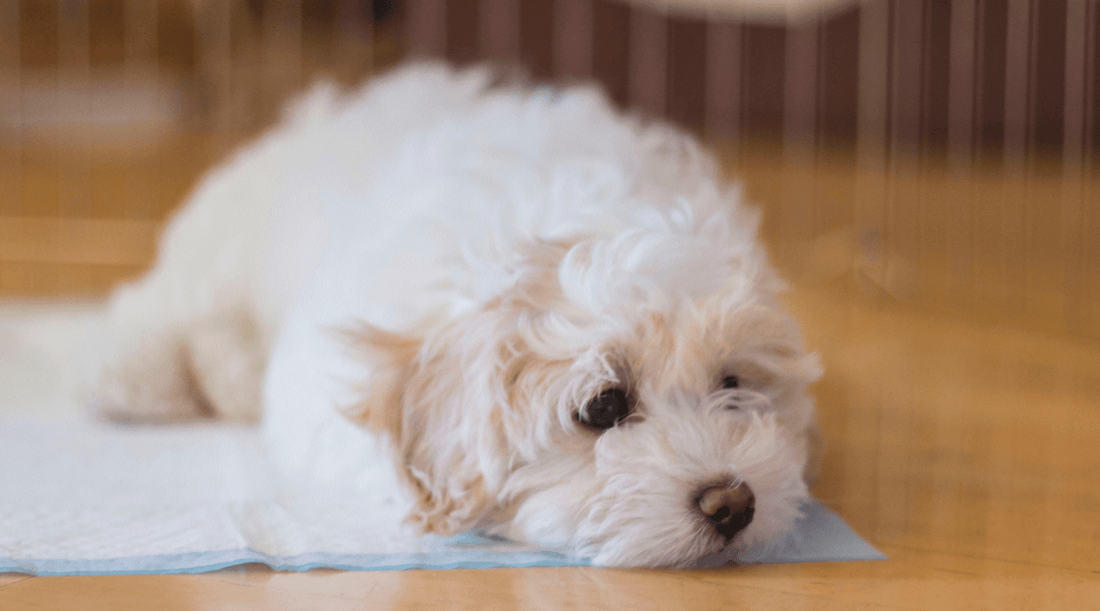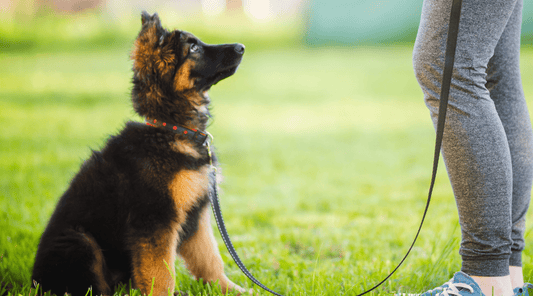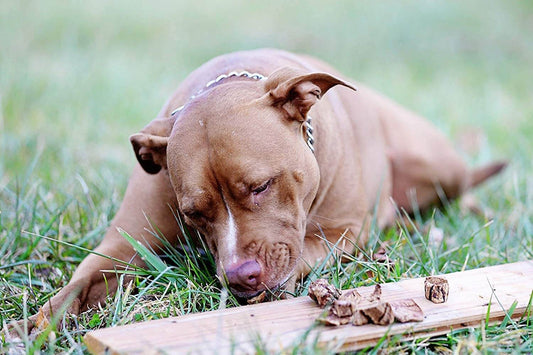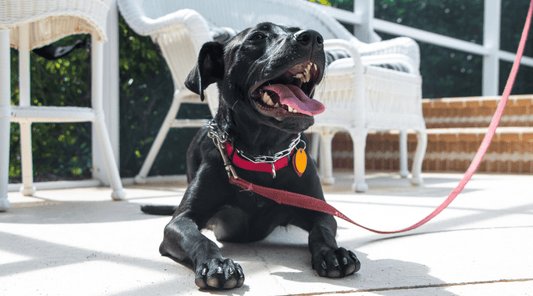
How to Potty Train a Dog: Patience, Persistence, and Treats
Dawn Miller Feb 04, 20256 Minute ReadSome life skills are indispensable, like how to potty train a dog. Like me, you've been the proud dog parent of more than one K9, and they don't always come pre-programmed because of insufficient puppy potty training or simply lack of experience inside someone's home.
Last week, my neighbor Zoe flagged me down while I was on my way to the dog park with my 3 dogs.
She looked frazzled and, dare I say, regretful. "I'm losing my mind here. I've never had a dog that didn't understand indoors vs. outdoors. Fredo will do his business anywhere. I took him to the vet to rule out a medical issue. They told me I'd be house training a dog if I wanted to keep him indoors at all."
I looked down at Zoe's American foxhound mix, floppy ears cute as a button, early senior years. I found it hard to believe he was causing this much trouble.
Zoe went on to explain she'd taken him in when his previous owner could no longer care for him. She thought maybe he spent most of his life outside, going wherever he claimed a potty spot. "Is there any hope? Can dog potty training work for adult dogs."
I reassured her that despite the saying, "old dogs can learn new tricks."
Why Potty Training Matters
Of course, you want to keep your floors clean. But are there other reasons to do dog potty training for an adult? There certainly are.
Dogs are intelligent. They want to understand you—what you want. So, house training a dog strengthens your bond with your dog. It communicates with them that your house (all of it) is your living area. It's not a place to dirty up.
Any kind of praise and treat-based dog training further strengthens this bond.
Dog potty training also boosts confidence. It can reassure a dog like Fredo that he's starting to figure out how his new home and family work. This can be especially hard for a rescue, even if he lived a good life. He's used to doing things a certain way and doesn't understand why he has a new family with different rules.
This increased confidence can reduce stress and strife. They no longer worry about upsetting you when they pick the wrong place.
It typically takes 6 months to fully potty train a dog, but you'll see dramatic improvements within a few weeks with the right dog potty training strategies.
How to Potty Train a Dog: Step-by-Step Guide
1. Establish a Routine
Consistency helps them more quickly learn what's expected. So, you'll start with very consistent potty breaks.
When puppy potty training, go out every 1-2 hours because puppies have small bladders. Also, establish other regular routines, like eating in the same place at the same time and having a walking/exercise time.
An adult dog can go out every 4-6 hours while training. This could mean coming home on your lunch break or arranging to tag team with a neighbor or other household member.
Remember, the 4-6 hours is only necessary when training. So it gets easier. Dogs can hold it for 6-8 hours, which is easier to manage once trained.
For adults and older puppies, it also helps to begin a regular dog bone chew session as part of your routine. Dogs chew on dog bones to alleviate stress, entertain themselves, and clean their teeth. When these basic needs are met, they're more responsive to training.
2. Keep Them in the Kitchen
Any time you're not with them, keep them in the kitchen with a dog gate (or outside with an appropriate setup). This keeps them off your harder-to-clean floors.
If they're crate-trained, you could alternatively keep them in a crate when you're not around. Dogs instinctively don't want to potty in their crate because it becomes their wolf's den. You can learn more about crate training a dog here.
But remember, these options are only stop-gap measures during training.
3. Choose a Designated Potty Spot
Dogs learn faster when you give them a specific place to go. Next to a fence or some bushes is great.
On each potty break, guide your dog to this spot.
4. Choose a Verbal Cue
Introduce a simple command like "Go potty" or "Do your business." Use this phrase consistently to help your dog associate it with the action. Always use a cheerful tone of voice.
Once this command is established, it will be helpful when you start taking your dog out to neighbor's homes and businesses. You'll be able to communicate where it's okay to go.
5. Reward Good Behavior
As soon as your dog does their business in the right spot, reward them with a treat and lots of praise. I suggested Zoe use single-ingredient treats like beef lung dog treats. They’re healthy, irresistible, and perfect for reinforcing good behavior.
6. Supervise Indoors
Watch for signs like sniffing, circling, whining, or walking to the outside door. These often mean they need to go out. Just like they're learning your cues, you must teach yourself to pick up on theirs for successful house training.
7. Handle Accidents Calmly
I know it's hard. But try to avoid responding negatively to accidents. Huffing, grumbling, heavy walking, disapproving hand gestures, complaining, and overly brisk cleaning are signs dogs can pick up on.
Dogs can misinterpret these as cues that you want them to go where they just had the accident. So, they can make dog potty training take longer.
Instead, if you catch your dog in the act, interrupt them with a firm but gentle "No" and immediately take them outside. Never punish your dog for accidents—this can create fear and confusion. Instead, focus on reinforcing positive behavior to get more of it.
8. Clean Thoroughly
Use an enzymatic cleaner to remove the scent of accident spots thoroughly. Otherwise, that smell will draw the dog back to previous potty locations. Eventually, the scent of their potty spot in the yard will be a much bigger draw.
Pitfalls of House Training a Dog
My Dog Ignores Me
Try using a higher-pitched voice. Because they have a higher hearing range, this can get their attention. Also, develop a consistent hand signal or stomp if you think your dog may be hard of hearing.
My Dog Keeps Using the Same Wrong Spot
Clean the area with an enzyme cleaner and possibly a carpet cleaner for deeper cleaning. Watch them closely when they walk toward that spot. Get up and take them out instead. Remember to reward them immediately with dog treats. I keep a bag of dog treats on my body to consistently provide positive reinforcement.
Dogs Aren't Responding to Positive Reinforcement
You could be using the wrong kind of treats. Dog treats for training should be irresistibly tasty to generate positive associations that become habits. Whether I'm puppy potty training or working with a senior dog like Fredo, I choose beef lung training treats. They're single-ingredient no-smell, roasted organ meat with no weird ingredients.
Still struggling? Sometimes, it's easier to see training in action. So, be sure to check out this Free 7-Day Dog Training Challenge. It's got so many helpful videos and tips.
Available On:





